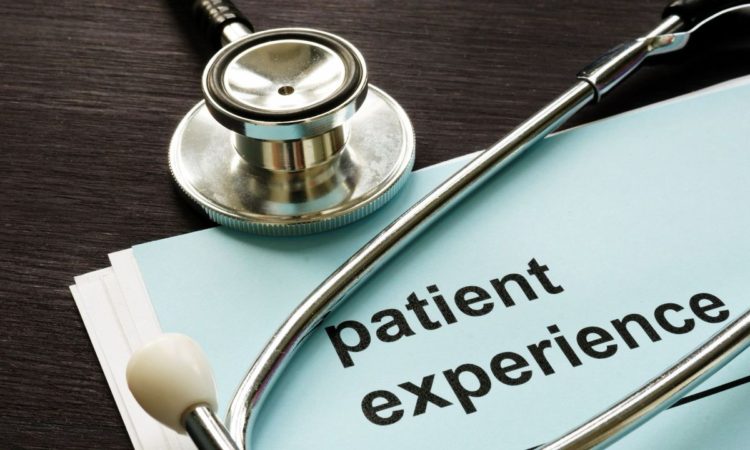How to improve the patient experience through digital transformation – Using the people, process and technology approach

Achieving a positive Patient Experience hinges on the integration of digital technologies within the healthcare ecosystem. This transformation, as defined by HIMSS (2024), encompasses various tools such as patient portals, telehealth services, predictive analytics, and medical AI, all with the patient at its core. Allow me to illustrate through these two real-life anecdotes, which I believe lovers of digital tools equally have their own stories to tell.
In March 2024, my uncle Kwabena visited a specialist who subsequently referred him to a dietetic expert. His first encounter left him with a rudimentary paper containing dietary information. Reflecting on this, I couldn’t help but wonder, couldn’t there be a better way? Even if the hospital couldn’t afford a dedicated mobile app, could the specialist not have recommended one?
This scenario brought to mind feedback from a first-time mum and dad during their post-natal visit to a private hospital where I once worked. They felt adrift throughout their pregnancy, receiving minimal guidance beyond prescriptions at each visit. They expected more proactive support from the hospital, lamenting the absence of check-ins or reminders through basic phone calls or even SMS messages during their journey.
These two scenarios and many others are the plight of today’s patients, whom I dub the “21st-century Google Patient”. They don’t just settle for anything, they demand more. Armed with internet resources, they often come prepared with questions and challenge diagnoses based on their research. However, they cannot self-treat. How then can healthcare providers bridge this gap and enhance their experiences? Here are some thoughts.
Firstly, prioritize implementing a robust Electronic Health Record (EHR) system capable of managing comprehensive patient data. This lays the groundwork for a data-driven environment, the backbone on which all other digital solutions hinge. A data-driven environment can prepare for the future (through analytics) and any emergencies. Seamless data management prevents inefficiencies like long wait times due to ID duplications or migration glitches. Imagine waiting for hours at your provider’s office because your Patient ID is duplicated or there is an information mismatch due to a recent migration onto a new solution, or the internet is down making it impossible to view your patient record. Dear Providers, if you get it wrong the first time as a hospital, get ready to pay extra to change multiple solutions and fix data inconsistency and redundancy. Management should ensure the solution is scalable to adopt future add-ons, is interoperable with other hospital management solutions and legacy systems, and is accessible both on and off. Patient privacy is critical therefore the EHR should be compliant with all global and national data protection laws.
Secondly, embrace telemedicine and other digital health solutions to offer patients convenience and accessibility. If you have not complied with this after Covid-19, then you are doing yourself a disservice as a provider. Maybe you enjoy the long queues at your centre, but what about the patients’ experience? I have experienced patients walking off from clinics because the place is too crowded and the queue isn’t moving. Leverage technology to allow your patients to book appointments, consult with their specialist online, make payments online and if possible deliver medications to their doorsteps. Patients now want access to their medical records which your facility has been collecting for years. How are you even maximizing the use of that data to provide improved outcomes?
Thirdly, automate processes to streamline operations, minimize errors, and enhance staff efficiency. When the doctor can easily communicate through an in-built chat system on their EHR portal with the Pharmacist to enquire about a drug he/she is prescribing for a patient, that is efficiency. If the Lab Scientist doesn’t have to type the lab results into the patient’s medical record, the system automatically feeds in the result through the click of a bottom that minimises errors. If the nurse wouldn’t mistakenly give patient A’s medication to patient B, because she has to scan the patient’s RFID wristband with her phone to confirm the correct name, that I say is scanning for medication accuracy. Lastly, when patients receive notifications and directions via their phones on their waiting time at every stage during their visit, and can just walk straight to the accounts office to pay in cash or make payment through digital channels, you have committed to workflow improvement given the patient the experience they want.
Fourthly, involve all stakeholders, particularly clinical staff, in the digital transformation journey. Their first-hand insights can inform procurement decisions and ensure solutions align with patient needs. For instance, doctors engage with patients more than any person within the hospital setting, therefore they can recommend any solution targeted at their patients better than any other person. Another critical stakeholder is the IT unit. Recognize the importance of IT personnel and invest in their training and development to maximize digital capabilities. Employ IT Personnel with the right professional credentials like #CAHIMS or #CPHIMS from #HIMSS and understand the hospital settings. Let us learn from the banking and financial sector as well as from developed nations and begin to work hand-in-hand with them to support our operations. Healthcare is transforming and we need to transform with persons within it. Remember, your hospital and patient’s information is managed by them.
Lastly, prioritize digital literacy and advocacy among clinicians and patients alike. Clinicians should lead by example, familiarizing themselves with digital tools to effectively introduce them to patients. Patients adopt easily solutions when it is recommended by their doctors or nurses. By employing this route as a provider, you are on your way to increasing the adoption rate of digital solutions by your patients thereby giving them the experience they deserve.
In conclusion, while transforming healthcare digitally, it is equally important to seek assessment and certification through HIMSS by adopting their £Digital Transformation Maturity Models. These models can help healthcare facilities navigate their digital transformation journey successfully and ensure they align with global standards. HIMSS has about six (6) maturity models which hospitals around the world who are championing digital transformation adopt. Visit their website – www.himss.org to learn more about this and don’t forget to let them know, that the HIMSS Ambassador in Ghana referred you.
Reference:
- https://www.himss.org/what-we-do-solutions/digital-health-transformation-overview
About the writer:
Maurice Acquah Amponsem CAHIMS is an Emerging Digital Health Strategist and Implementer, a member of HIMSS and a recipient of the 2023 HIMSS Foundation Professional Certification Grant for Minority Professionals and Students. The founder of Klinician 24 – a digital health transformation and advocacy startup in Ghana. He is passionate about digital health, workforce training, patient experience and working with data. He is an operational person and loves to connect with people, and coordinate activities. One of his dream projects is to see HIMSS set up its African Community and Office in Ghana, which he is coordinating with some wonderful healthcare professionals to achieve. Connect with Maurice to discuss your healthcare facilities’ transformation plans.







